 Date:2024.11.12
Visits:314
Date:2024.11.12
Visits:314
With high-bandwidth optical communication technology, the 1.6T optical module achieves data transmission rate of 1.6 terabits per second through multi-wavelength multiplexing, to fulfill the needs of data centers, high-performance computing, and large-scale network infrastructures that demand ultra-high-speed data transmission. Compared to traditional 400G or 800G optical modules, the 1.6T module has significant improvements in bandwidth, signal processing technology, and module packaging.
01,Demands Rising Rapidly for 1.6T Driven by Computational Power
In recent years, the development of new technologies such as artificial intelligence (AI), virtual reality (VR), and autonomous driving has raised higher requirements for the bandwidth, transmission rate, and coverage of optical modules. Continuous iterations and rapid deployment of optical modules are expected, making 1.6T as a new market trend.
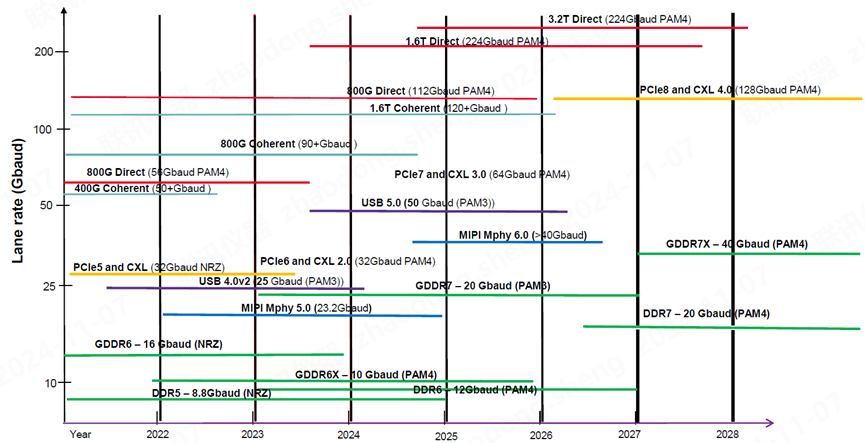
▲Progress of high-speed O/E interfaces in data centers
02, Introduction of 1.6T products expected by the industry
The 1.6T optical modules are theoretically designed according to IEEE P802.3dj. However, since this protocol has not yet been officially released, currently manufacturers could only rely on industry consensus by using 8-channel 100~112G Baud PAM4 signal, which is 200~224Gbps each channel. This year, 1.6T optical modules have been in pre-production stage and are expected to achieve commercial release in next year.
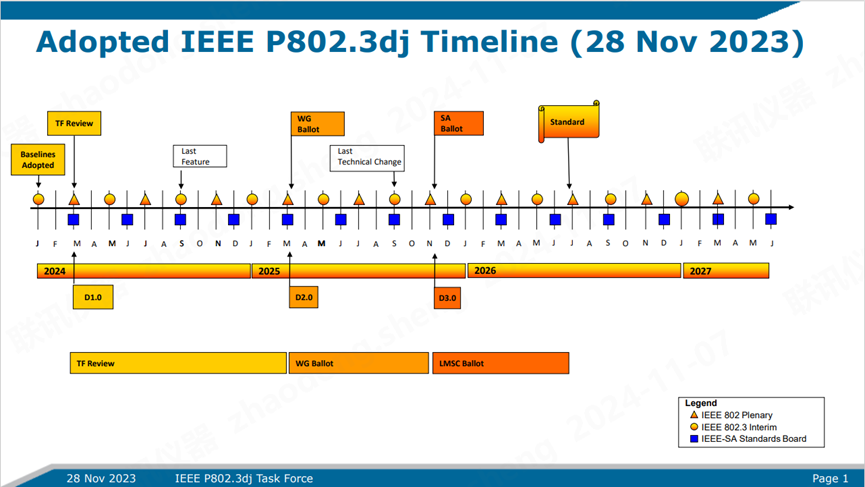
▲ IEEEP802.3dj Timeline
03, Semight instruments, the solution for 1.6T testing
The 200Gbps/lane data rate offers higher bandwidth and reduces power consumption significantly. However, this also a big challenge for testing and measurement. To address 200Gbps/lane signals, Semight redesigned a new ASIC and introduced the DCA1065 wideband sampling oscilloscope.
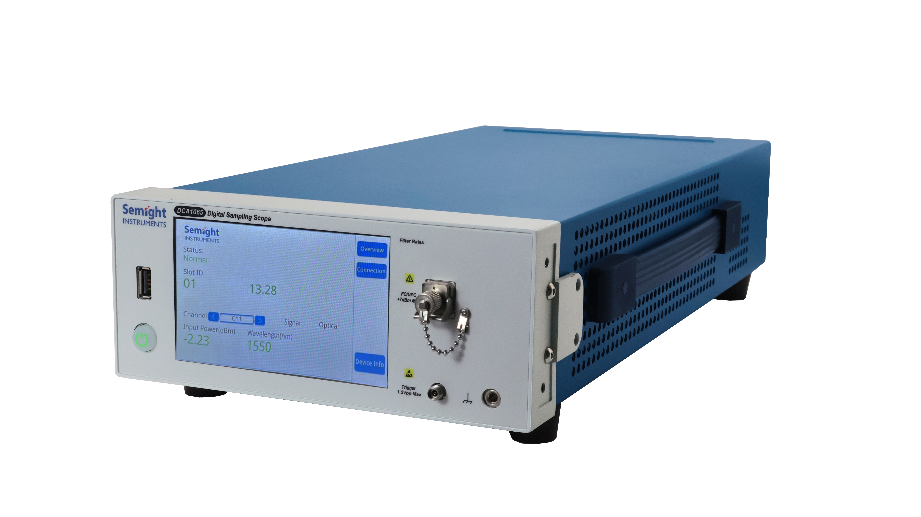
▲DCA1065
The DCA1065 design is backward compatible with DCA6201 on certain test signals, supporting single-mode (wavelength 1200–1600nm) 53–56GBd and 106–112GBd PAM4 signal testing. The system response can be corrected and adjusted through SIRC (System Impulse Response Correction) to meet various signal rate testing requirements. Additionally, the DCA1065 supports up to 64-taps TDECQ (Transmitter and Dispersion Eye Closure Quaternary) feed-forward equalizer (FFE) to eliminate inter-symbol interference (ISI).
For 1.6T testing applications, the Semight DCA1065 sampling oscilloscope supports eye diagram testing up to four channels of 100GBd PAM4 signals. A GUI-based software provided by Semigth connecting instrument to PC to run the PAM4 test items including
Bit Rate
Average Power (dBm, W)
TDECQ, Ceq, Partial TDECQ (dB)
Noise Margin, Partial Noise Margin (W, V)
Outer Extinction Ratio (dB)
Outer OMA (dBm, W)
Linearity[2]
Level 0/1/2/3 (W)
Overshoot/Undershoot (%)
Transmitter Power Excursion (dBm、W)
Transition Time (Rising/Falling) (s)
Eye Level Upper/Middle/Lower (W, V)
In PAM4 testing, PRBS or SSPRQ code patterns could be used according to protocol. Here under are some key test items including TDECQ (Transmitter and Dispersion Eye Closure Quaternary), OER (Outer Extinction Ratio), and Outer OMA.
TDECQ is derived from the statistical information of the signal (eye diagram) and provides a measurement of the vertical eye closure of the transmitter. The measurement is based on two vertical histograms within the eye diagram. Ideally, the histograms are centered at 0.45 UI and 0.55 UI, spaced 0.1 UI apart, with each window width set at 0.04 UI. The histograms cover all modulation levels in the eye diagram, and their position is adjusted to obtain the minimum TDECQ value.

▲Diagram of TDECQ measurement windows
OMA (Outer Optical Modulation Amplitude) refers to the difference between the level values P3 and P0 measured on two UI of 7 consecutive '3' and 6 consecutive '0' patterns, calculated as OMA = P3 - P0. The OER (Outer Extinction Ratio) is derived from these level values, calculated as OER = P3/P1.
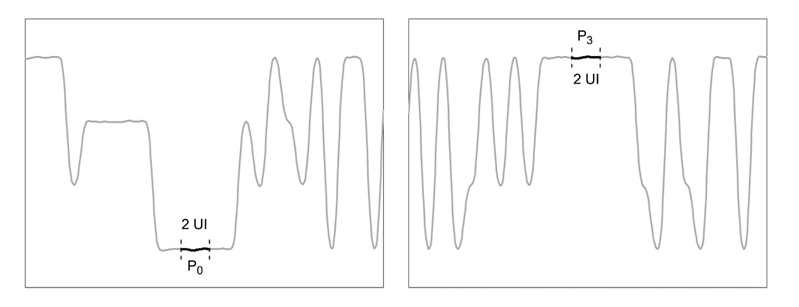
▲Illustration of power levels P0 and P3 in the definition of Outer OMA/ER
Below is the test results of a 106GBd PAM4 signal (SSPRQ code pattern):
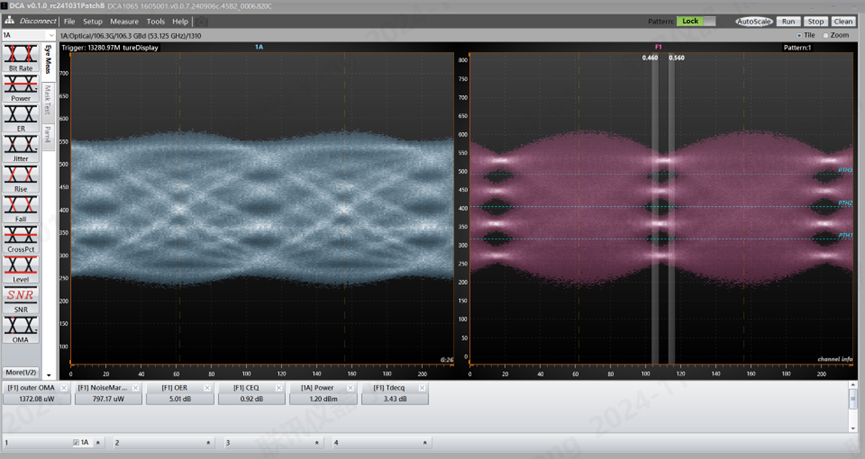
▲Screenshot of 106GBd PAM4 signal testing with the DCA1065
Calculated values are as below:
|
No. |
Items |
Values |
Description |
|
1 |
(Average)Power |
1.20dBm |
Average input optical power |
|
2 |
(After FFE)TDECQ |
3.43dB |
Transmitter dispersion eye closure (PAM4) |
|
3 |
(After FFE)OER |
5.01dB |
Extinction ratio |
|
4 |
(After FFE)Outer OMA |
1372.08μW |
Optical modulation amplitude |
|
5 |
(After FFE)Noise Margin |
797.17μW |
Noise margin |
|
6 |
(After FFE)Ceq |
0.92dB |
Noise gain introduced by FFE |
Semight will keep on moving on the test solutions for 1.6T pluggable optical modules, silicon photonics, and CPO. To provide more values during the rapid development of emerging technologies such as artificial intelligence etc.
Service hotline
Follow
Name
Email verfication code
Phone
Password
Confirm Password
e-mail address
Email verification code
New Password
Confirm Password